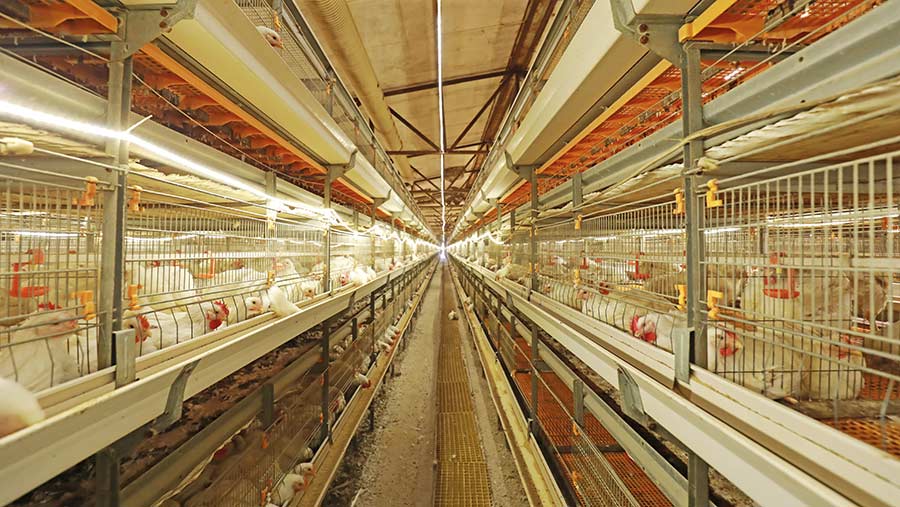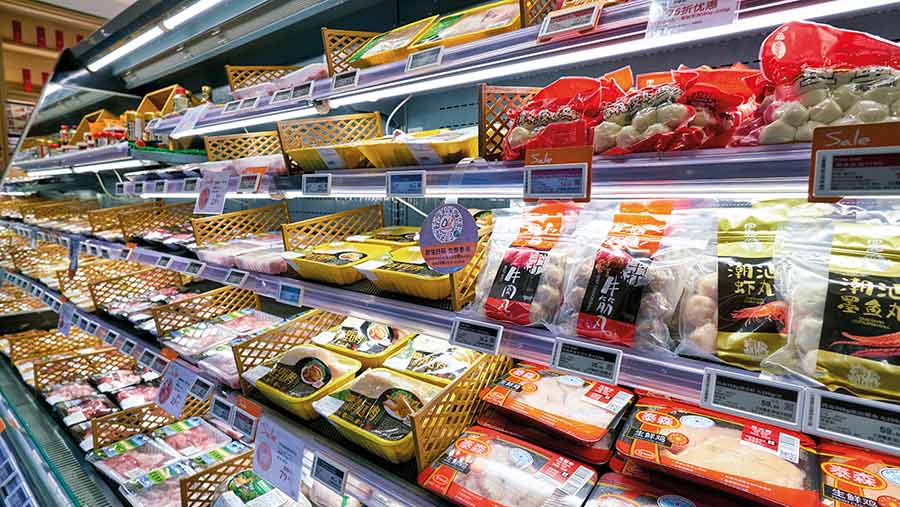Poultry market threats and opportunities from the Far East
 © Zhang Yongxin/Adobe Stock
© Zhang Yongxin/Adobe Stock Growing demand for poultrymeat and eggs in Asia has seen huge scaling up of local facilities. We look at what it means for British producers already exporting, or looking to get into the market.
Chicken replaced pork as the key protein in China as African swine fever devastated the domestic pig herd.
To meet the demand, China’s poultry industry has entered a huge construction phase, with large companies investing to modernise the sector.
See also: Growth in China’s meat imports starts to slow
Vertically integrated facilities, scheduled to come online in 2022, could increase production capacity by 20%, according to a US Department of Agriculture (USDA) Global Agricultural Information Network (Gain) report.
The scale of the new facilities is staggering. Largely concentrated in northern central provinces, most have been led by established producers with production capacity at or above 100 million broilers a facility a year.
New housing for at least one billion more chickens is under construction, according to Walter Benz, president and managing director for China at poultry equipment supplier Big Dutchman Group.
The firm’s customers include a 100 million-bird farm and slaughter project by Shandong Xiantan.
And two 100 million-bird projects by top Chinese pork processor Henan Shuanghui Investment and Development Co – due for completion by the end of 2021 and June 2022, respectively.
But the USDA forecasts that full use of the new production capacity is unlikely to occur until chicken prices rise.
Chinese market

Heorshe/Adobe Stock
The Chinese poultry sector has been on something of a roller-coaster in recent years.
Initially, demand soared following the African swine fever outbreak – but as pork recovered it stole back some market share, says Justin Sherrard, analyst at global bank Rabobank.
“White broiler production continued its rapid growth in 2021, resulting in oversupply as demand declined on falling pork prices,” he explains.
“This supply pressure will lead to slower production in 2022, particularly in the first half, given that pork prices are expected to stay low.”
Rising input costs will put extra pressure on the poultry supply chain, challenging underperforming producers, he says.
“Large companies will continue to focus and invest downstream, in response to the closure of live bird markets, and to increase the supply of chilled and processed products at the expense of live birds.”
Entering 2022, Mr Sherrard expects Chinese poultry imports to continue the downward trend seen in Q3 2021.
“However, imports are likely to pick up in the second half of the year as pressure on the market from domestic supplies eases.”
The USDA Gain report predicts a 3% rise in Chinese poultrymeat imports (excluding feet) in 2022, to 930,000t, as imports remain competitively priced and consumer demand grows.
In 2022, imports of chicken feet are forecast to reach 800,000t on rising demand from processors and retailers.
In the first half of 2021, imports of US chicken feet exceeded 100,000t based on Chinese customs data – nearly a 200% increase on the same period last year.
According to the report, China’s poultrymeat exports are forecast to grow by 4% in 2022, to 440,000t, as food service sectors in major export markets – such as Japan and Hong Kong – gradually recover from disruptions caused by the Covid-19 pandemic.
After an expected decline in 2021, chicken meat production in China is forecast to rebound by 2% to 14.3m tonnes in 2022, with large broiler producers using expanded production capacity from new facilities.
The opportunity for UK producers
As well as the equipment manufacturers, large companies such as Cargill also have a presence in China.
The company’s poultry units in China are more comparable to those in the US, UK and Europe in terms of scale, technology and standards, says Richard Griffiths, British Poultry Council (BPC) chief executive.
British broiler producers see China as a potential export market for meat and breeding stock, however, no trade deal is on the horizon.
“There’s an opportunity if the government can open up the market. But barriers are all political, not technical,” says Mr Griffiths.
However, UK-produced feet and dark meat are traded into China via Hong Kong, where there is a thriving market, he says.
Regarding possible imports from China to the UK under a future trade deal, products such as cooked breast meat, currently sourced from Thailand, or brined/frozen meat, supplied by Brazil, would be acceptable.
That is because it wouldn’t directly compete with British produce, says Mr Griffiths.
“We know the UK consumer likes British product in the fresh meat market. Only if China cracked into the UK fresh meat market would imports pose a threat.”
Import standards must also be maintained in any forthcoming deals.
While Australia and New Zealand are not key players in the British poultry market, the BPC is watching for any reduction in production or environmental standards in trade deals agreed with these nations, which could be an indicator of how tough a line the UK will take in other potential trade deals.
Cage-free eggs take off in Hong Kong
Demand for cage-free eggs in Hong Kong will increase by 70 million eggs annually by 2025, and by an estimated 140 million eggs a year by 2028, according to a Lever market study.
More than 60 major food and hospitality companies in Hong Kong have pledged to purchase exclusively cage-free eggs, including Pizza Hut and InterContinental Hotels.
A recent survey released by China food media agency Foodtalks found that more than 75% of Chinese consumers would be more likely to patronise a food brand if it committed to using only cage-free eggs.
In mainland China, demand for cage-free eggs is set to increase by 1.5 billion eggs annually by 2025 in response to existing corporate commitments.
According to Lever, China produces eggs from more than 150 million cage-free hens, and an increasing number of domestic and international companies operating in China have begun switching to these systems.
